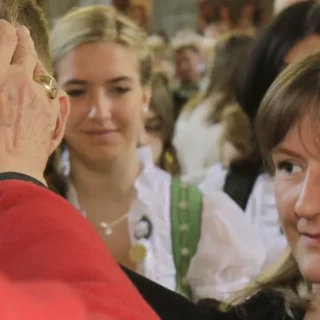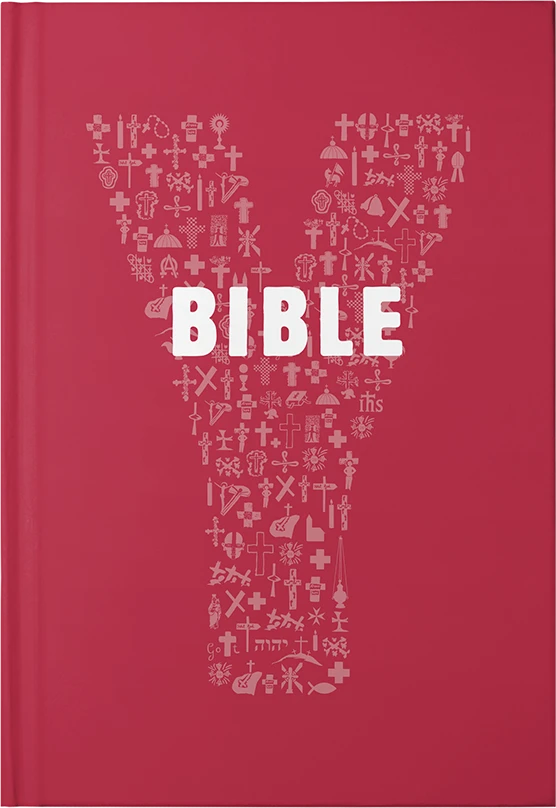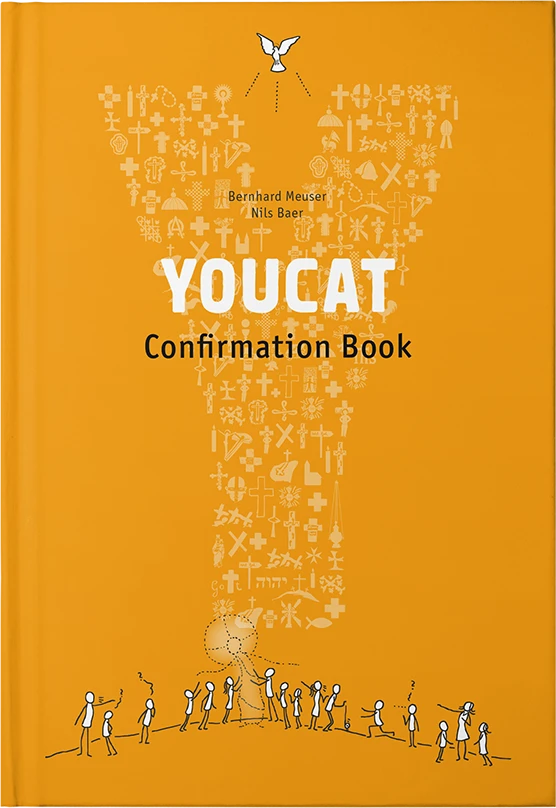

Credopedia
The Immaculate Conception in the Catholic Church
An explanation of the immaculate conception of Mary and what the Catholic Church says about it.
Definition
The Immaculate Conception of Mary
In YOUCAT 83 it says: The Church believes that “the most Blessed Virgin Mary was, from the first moment of her conception, by a singular grace and privilege of almighty God and by virtue of the merits of Jesus Christ, Savior of the human race, preserved immune from all stain of original sin.” This binding doctrine of the church (= dogma) was proclaimed by Pope Pius IX in 1854.
What does the Holy Bible say?
Sacred Scripture makes no direct statement about the Immaculate Conception of Mary. This mystery of faith is, however, a prime example of how God’s revelation unfolds in the interaction of Sacred Scripture and Tradition (= the living faith of the church). In Gen. 3:15, there is talk of the serpent (the evil one, the devil), and it says: I will put enmity between you and the woman, and between your offspring and hers; They will strike at your head, while you strike at their heel. (Gen 3,15). From the beginning, the Church has read another scripture from the last book of the Bible, The Book of Revelation, in connection with the overcoming of evil: “A great sign appeared in the sky, a woman clothed with the sun, with the moon under her feet, and on her head a crown of twelve stars” (Rev 12:1). It was seen in this woman, who was not affected by sin, a “new Eve”, the Mother of God — and with her and her son, the end of the dominion of the Evil One: “Now have salvation and power come, and the kingdom of our God and the authority of his Anointed. For the accuser of our brothers is cast out, who accuses them before our God day and night” (Rev 12,10). The fact that God sought for his coming into the world a woman who was without the “stain of sin” was always taken from the angel’s greeting in Lk 1:28: “Hail, favored one! The Lord is with you.”
A short YOUCAT-Catechesis
An incredibly simple-minded girl
We should not say anything bad about others, especially not when they have already died. We even experience displeasure when we read that person who knew Bernadette Soubirous said that she was of weak intelligence, an almost incomprehensible obtuseness. At the age of 14, she could neither read nor write. Teachers might call this “educationally incapable” and would attribute her mental state to her social environment. At that time, she was only 1.40 meters tall, and she had asthma attacks and stomach aches. No wonder, as she was also the child of antisocial alcoholics. The family vegetated in the last, damp dump of Lourdes and the father supported the family through odd jobs.
A Close Encounter of the Third Kind?
This was the case until February 11, 1858, because within a few months beginning at this point, this little silly girl became world-famous. This is how it happened: While collecting wood on the banks of the Gave, near a river cave, an unknown “lady in white robes” appeared to little Bernadette, to whom she was friendly and communicative. May the little one come back. “I went there for a fortnight, and the lady appeared every day except on a Monday and Friday. Each time she told me to remind the priests to build the chapel. Each time she told me to wash in the spring.” Bernadette did that, and each time, more people accompanied her.
The only problem was the priest, Abbé Peyramale. Bernadette was not allowed to take her First Communion because of her stupidity. She did not manage to learn the catechism. And now this brat came to him with her strange stories. Building a chapel! Anything else? To get rid of her, Peyramale said: “Then let the lady tell you her name!”
Clear orders for Bernadette.
And indeed, the lady was not at all angry. At the 16th apparition on 25 March 1858, she said something in the dialect of the Pyrenees that Bernadette could only understand by the sound of it: “Que soy era Immaculada Councepciou!”
Eh?
I am the Immaculate Conception! What was that supposed to mean?
“Que soy era Immaculada Councepciou!” Bernadette stammered the perplexing words to the priest. He was thunderstruck. And there was a reason for it. Four years earlier in Rome, Pope Pius IX had proclaimed a dogma that divided the Catholic world: Mary had remained “unscathed by all the damage of original sin.” The pious found the “Maria Immaculata” wonderful; but in a contemporary account we also read: “There has been a great scream about it, and the well-known Beerhouse Newspaper of Frankfurt, which is obsessed with hatred against the Catholics, has begun to prophesy: now the Catholic Church will come to an end, it will fall apart and disintegrate, like an old tub that has no more ripeness.”
For Father Peyramale, it was inconceivable that a girl who could not count to three could have heard anything about Mary, the “Immaculata.” And he came to faith twice. From then on, he believed Saint Bernadette, and he believed that Pius IX had in no way followed a crazy idea, but the will of God when the faith in the “Immaculate Conception of Mary” was dogmatically proclaimed in the Church.
No doubt about it: the lady who showed herself to this simple girl was Mary. And she apparently approved of the dogma.
It is not about sex at all
Incidentally, the belief in the “Immaculate Conception” has not only existed since Pius IX, but rather since the beginning of the Church. Today, however, the term is highly ambiguous. Anyone who does not have a little background knowledge might think of sperm stains, and suspect that the church still has quirky views of dirty sex. But, first of all, it’s not about the conception of Jesus, but about an event that took place about 14 or 15 years earlier with Joachim and Anna, Maria’s parents. And not even that event is about clean sex.
“The Immaculate Conception” means that God saved Mary from original sin, right from the beginning. In YOUCAT 83 it is made clear: The Article of Faith “says nothing about the conception of Jesus in Mary’s womb. By no means is it a devaluation of sexuality in Christianity, as though a husband and wife would be ‘stained’ if they conceived a child.”
Ida Friederike Görres once called Mary “the unspoilt concept” the God of man. Ultimately, the dogma of the “Immaculate Conception of Mary” speaks less of Mary than of the unspoilt thoughts of God around the Incarnation of His Son. Surely Jesus, the Son of God, could also have accepted the flesh of a Rachel, a Hanna or a nameless woman. But where God Himself comes into the world, it becomes brighter and brighter — and thus it is actually unthinkable that a human child, still oscillating between the forces from below and the grace of God, should become the Mother of God. That is why the Mother of the Redeemer had to be free of sin from birth through a choice of God and a massive invasion of grace.
She and she alone among all human children.

YOUCAT Digital
Discover our digital products, which will help you to grow in faith and become missionaries yourself.







